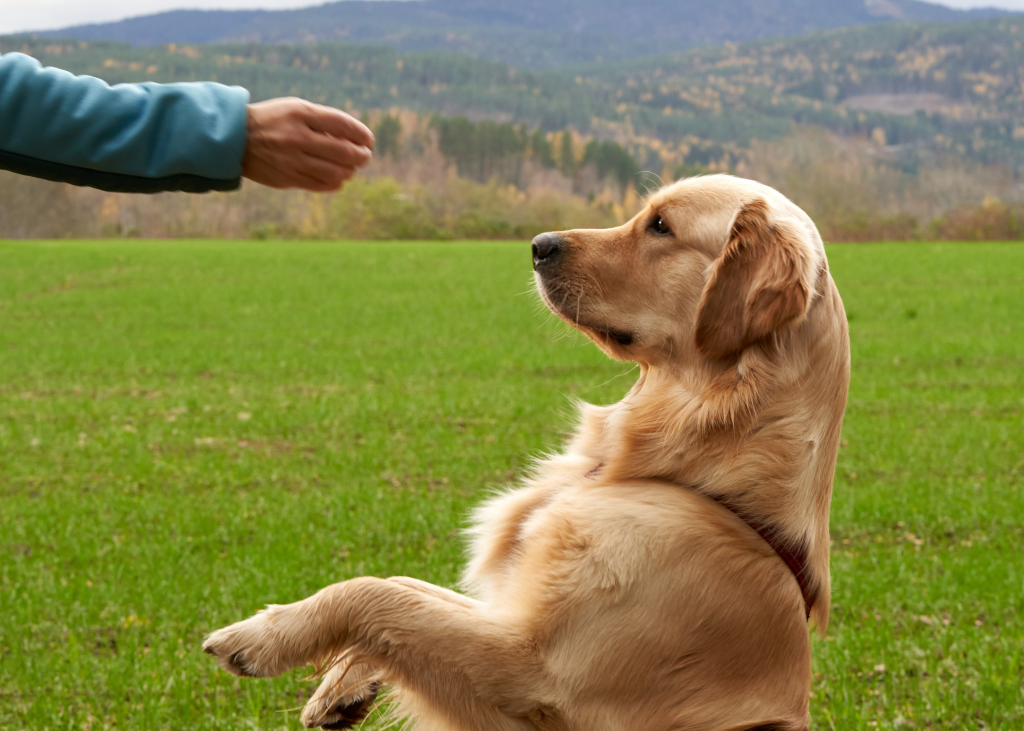Pennsylvania is home to many dog lovers who understand the importance of proper obedience training. This type of training can have a significant impact on a dog’s life, improving their behavior and creating a stronger bond between them and their owners. In this article, we will explore the benefits of obedience training, basic commands and techniques, finding the right training school, home-based training tips, and addressing common challenges.
Understanding the Importance of Obedience Training
Obedience training plays a vital role in a dog’s life. It provides them with structure, discipline, and guidance, helping to shape their behavior in a positive way. Dogs who have undergone obedience training are more likely to exhibit good manners, follow commands, and have a lower risk of engaging in destructive behavior. This type of training is not only beneficial for the dog but also for their owner, as it strengthens the bond between them and enhances communication.
The Role of Obedience Training in a Dog’s Life
Imagine a dog as a ship sailing in the vast ocean of life. Without proper training, the dog would be like a ship without a captain, drifting aimlessly and susceptible to various dangers. Obedience training acts as the captain, guiding the dog through rough waters, teaching them to navigate challenges and stay on course. By establishing boundaries and teaching commands, obedience training empowers dogs to make the right decisions and become well-behaved members of society.
During obedience training, dogs learn to respond to verbal and visual cues from their owners. They develop a deep understanding of what is expected of them and how to behave in different situations. This training not only helps dogs to become obedient but also instills a sense of confidence and self-control in them. They learn to trust their owners and rely on them for guidance, creating a strong and harmonious relationship.
Furthermore, obedience training provides mental stimulation for dogs. Just like humans, dogs need mental exercise to keep their minds sharp and prevent boredom. Through obedience training, dogs are challenged to learn new commands, solve problems, and think critically. This mental stimulation not only keeps them engaged but also helps to prevent behavioral issues that may arise from boredom or frustration.
Benefits of Obedience Training for Dogs
The benefits of obedience training extend beyond well-mannered behavior. Research has shown that dogs who receive obedience training experience improved mental stimulation, leading to a happier and healthier life. Dogs are intelligent creatures, and when their minds are actively engaged, they are less likely to develop behavioral problems or exhibit destructive behavior.
Additionally, obedience training helps to prevent behavioral problems such as aggression, excessive barking, and destructive chewing. By teaching dogs appropriate ways to express themselves and redirecting their energy towards positive outlets, obedience training addresses the root causes of these behaviors. It also enhances safety, as a trained dog is more likely to listen and respond to commands, reducing the risk of accidents or dangerous situations.
Moreover, obedience training provides dogs with essential life skills. They learn how to interact with other dogs and humans in a controlled and respectful manner. This socialization aspect of training helps dogs to become well-adjusted and confident in various environments. It also allows them to participate in activities such as dog sports, therapy work, or simply enjoying outings with their owners without causing any disruptions.
In conclusion, obedience training is a crucial aspect of a dog’s life. It not only teaches them how to behave but also provides mental stimulation, enhances safety, and strengthens the bond between dogs and their owners. By investing time and effort into obedience training, dog owners can ensure that their furry companions lead happy, well-behaved, and fulfilling lives.
Basic Commands and Techniques in Obedience Training
Mastering essential commands is the foundation of obedience training. These commands not only ensure the dog’s safety but also enable effective communication between the dog and their owner. Here are some key commands that every dog should know:
- Sit: Teaching a dog to sit is fundamental. It helps to establish control and calmness in various situations.
- Stay: The stay command is crucial for keeping the dog in one place, preventing them from running off or getting into potential danger.
- Come: The come command is essential for calling the dog to return to their owner, promoting safety during walks or off-leash activities.
- Leave it: This command teaches the dog to ignore items or distractions that may be harmful or undesirable.
Techniques for Effective Training
Training techniques play a crucial role in the success of obedience training. Positive reinforcement is a widely recommended technique that utilizes rewards such as treats, praise, and play to motivate the dog. This technique not only helps the dog associate obedience with positive experiences but also strengthens the bond between the dog and their owner through trust and respect.
When using positive reinforcement, it is important to choose rewards that are highly motivating for the dog. This could be their favorite treat, a special toy, or even verbal praise with an enthusiastic tone. By rewarding the dog immediately after they perform the desired behavior, they will quickly learn to associate the command with the reward.
Consistency is key in obedience training. Dogs thrive on routine and repetition, so it is essential to practice commands regularly in different environments and situations. This helps the dog generalize the command and understand that it applies in various contexts.
Another effective technique is clicker training. This method involves using a small handheld device called a clicker, which makes a distinct clicking sound. The clicker is used to mark the exact moment the dog performs the desired behavior, signaling to them that a reward is coming. This clear and consistent signal helps the dog understand which behavior is being reinforced.
It is important to keep training sessions short and enjoyable for both the dog and the owner. Dogs have short attention spans, so keeping the sessions brief prevents them from becoming bored or overwhelmed. Ending on a positive note, with a successful command followed by a reward, leaves the dog eager for the next training session.
While positive reinforcement is highly effective, it is also important to avoid punishment-based training methods. These methods can lead to fear, anxiety, and aggression in dogs, damaging the trust and bond between the dog and their owner. Instead, focus on rewarding and reinforcing positive behaviors.
Remember, every dog is unique, and training methods may need to be adjusted to suit their individual needs and personality. Patience, consistency, and positive reinforcement are the keys to successful obedience training, leading to a well-behaved and happy canine companion.
Finding the Right Obedience Training School in Pennsylvania
Choosing the right obedience training school is essential to ensure a positive training experience for both the dog and their owner. Here are some factors to consider when making this decision:
- Experience and qualifications of trainers: Look for trainers who have extensive experience and relevant certifications in obedience training.
- Training methods: Ensure that the training methods used align with your preferences and values.
- Class size: Smaller class sizes allow for more individual attention and personalized training.
- Facilities: A well-equipped training facility can contribute to a conducive and safe training environment.
Recognizing a Good Dog Trainer
Finding a good dog trainer can make a significant difference in the effectiveness of obedience training. A skilled trainer possesses qualities such as patience, empathy, and excellent communication skills. They understand that every dog is unique and will tailor their training approach to meet individual needs.
Home-Based Obedience Training Tips
Obedience training should not be limited to formal sessions at a training school. Consistency is key, and incorporating training into daily routines at home can accelerate the learning process. Here are some tips for home-based training:
Setting Up a Training Schedule at Home
Establishing a regular training schedule helps create a routine that the dog can anticipate. Short, focused training sessions spread throughout the day are more effective than long, sporadic ones. Find a quiet and distraction-free area at home where you can work on commands without interruptions.
Using Positive Reinforcement in Home Training
Positive reinforcement is equally important in home-based training. Use treats, praise, and play to reward your dog for their good behavior and progress. Consistently rewarding desired actions will help them understand what is expected and motivate them to continue learning.
Addressing Common Challenges in Obedience Training
Obedience training can sometimes come with challenges. Understanding and addressing these challenges can help ensure a successful training experience.
Dealing with Stubborn Behavior
Some dogs may exhibit stubborn behavior during training. It is important to stay patient and consistent. Break down commands into smaller steps and gradually increase the difficulty. Offering enticing rewards and using positive reinforcement can motivate a stubborn dog to cooperate and learn.
Overcoming Fear and Anxiety During Training
Fear and anxiety can hinder a dog’s ability to learn and respond to training. It is essential to create a safe and supportive environment, providing reassurance and positive experiences during training sessions. Gradual exposure to new stimuli and desensitization techniques can help alleviate fear and build confidence.
In conclusion, obedience training is a crucial component of a dog’s life in Pennsylvania. It provides numerous benefits, including improved behavior, enhanced communication, and mental stimulation. By mastering essential commands, finding the right training school, incorporating home-based training, and addressing common challenges, dog owners can create a harmonious and fulfilling relationship with their furry companions. Remember, just as a well-trained dog is like a captain steering their ship confidently, a trained dog is a happy and obedient companion.
Enrollment Process and Contact Information
Ready to start? Enrolling in our puppy and adult canine training program is easy. Reach out to us via phone, email, or visit us at our facility to register. We’re excited to welcome you and your pet to the Absolute Canine family! We can’t wait to be a part of your dog training journey and take the first step towards a more harmonious and joyful life with your dog. Let’s make great things happen together!



